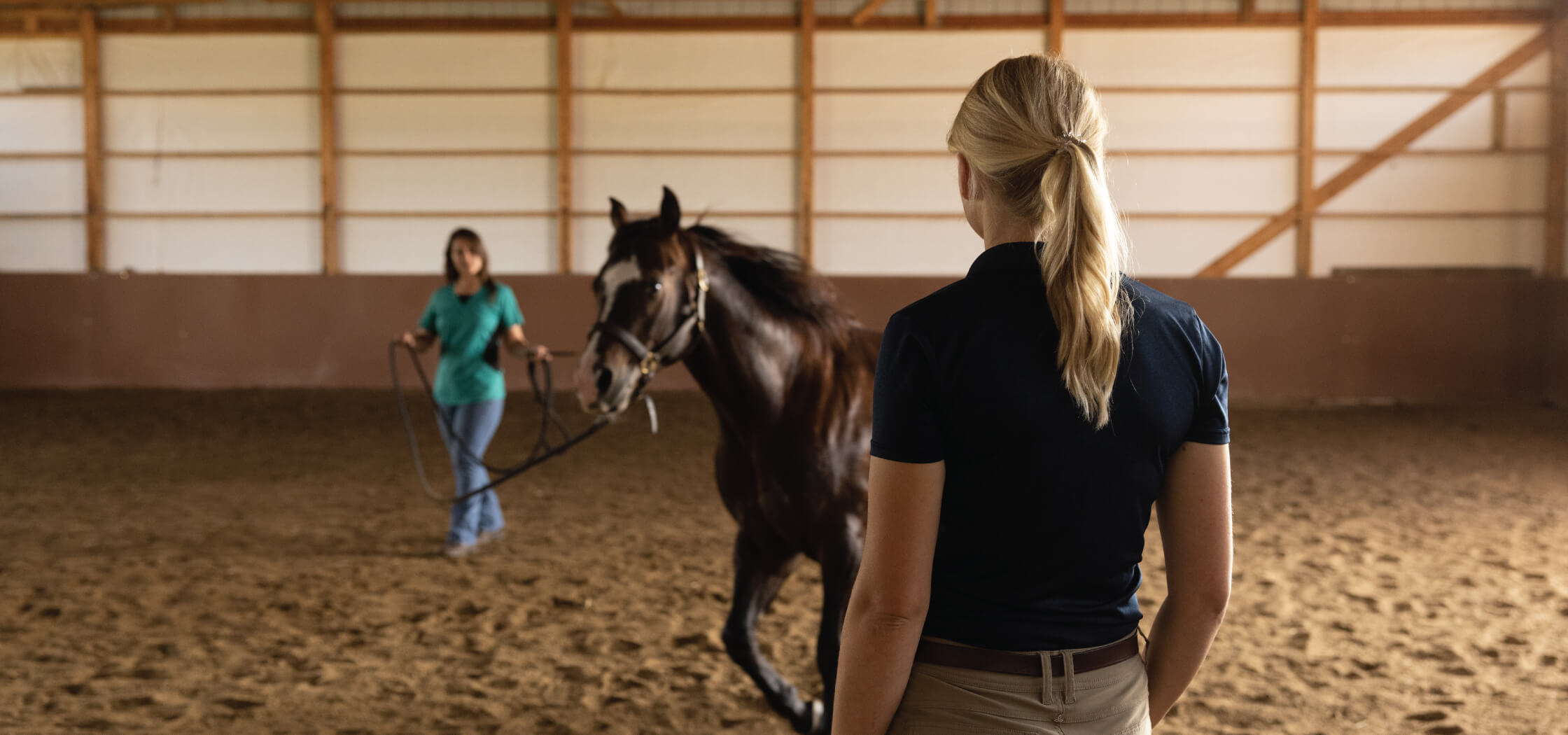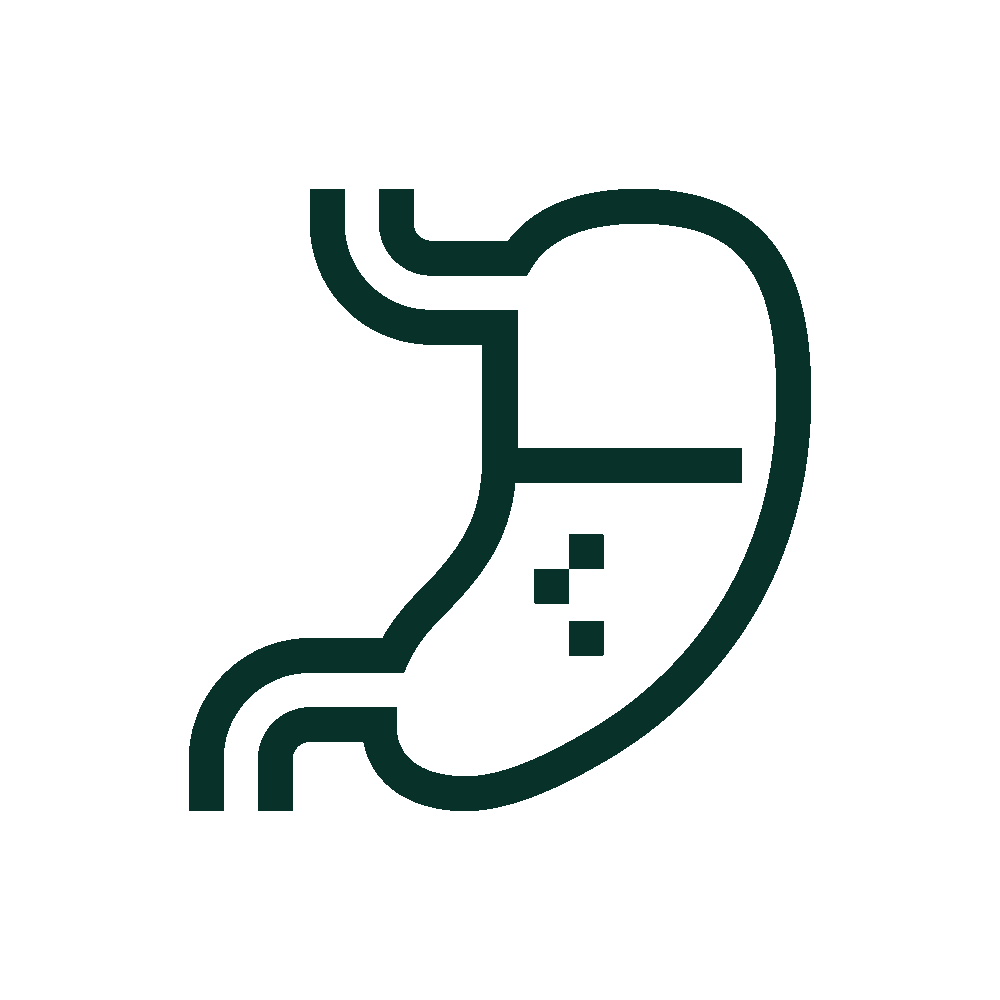How a Lameness Exam Works
by Boehringer Ingelheim / May 17, 2024

What to Expect During a Lameness Exam
Whether a horse “feels off” under saddle or has a noticeable limp, a lameness exam helps to pinpoint the source of the problem and sets the foundation for a treatment plan. Consulting with a veterinarian right away, even in minor cases, decreases lost riding time and increases the chance of recovery.
Start the process with a phone call to your veterinarian’s office. In most cases, your veterinarian will want to examine your horse at their earliest opportunity, which, depending on their schedule, may be days away. If so, follow their advice for what to do in the meantime regarding giving any anti-inflammatory medications, if the horse can be turned out or if any exercise is allowed. If the horse is unable to bear weight on the leg, or seems to have pain in both front feet as seen with laminitis, those are worthy of an emergency call.
Finding the Pain
Identifying the source of the lameness is like a scavenger hunt -- it is not always obvious where the issue is stemming from and in many cases, horses may have more than one source of lameness. For example, a horse who shows lameness in both directions of a circle may have just one lameness that is severe enough to be seen both directions, or two different lamenesses that are each being seen.
That is why it is so important to allow your veterinarian to perform a complete exam, even in horses that have had previous issues localized to one area. The lameness exam informs a veterinarian’s diagnosis and treatment plan. Below is what to expect when the veterinarian arrives.
Visual and Physical Observations
Veterinarians begin every exam by visually observing the horse, and by palpating or feeling each part of the horse’s body. In this step, veterinarians look for heat or inflammation, response to touch, or a decreased range of motion.
Putting their hands on the horse helps them focus on areas that may be the source of the pain.
Next, they will ask to see the horse move at a walk, and trot in a straight line and a circle on hard and soft ground. Watching the horse move this way allows veterinarians to grade the severity, and help localize the region of pain to one or more limbs.
“Identifying the specific causes of lameness can be challenging,” says Sarah Reuss, VMD, DACVIM, Boehringer Ingelheim Technical Manager. “Horses can’t tell us where they hurt, and often the way they move doesn’t always reveal the exact source of lameness. That’s where additional testing can be beneficial.”
Diagnostic Tests
To confirm what a veterinarian sees in a visual exam, they systemically move through a series of diagnostic tests to pinpoint the source of the issue. These tests include:
- Flexion test: The veterinarian “flexes” or puts stress on a specific joint or region of the body, and watches how the horse moves after the pressure is applied. Veterinarians are looking to see if the lameness increases, and how it compares with movement in the other limbs.
- Diagnostic analgesia: A nerve block is used to pinpoint the location of pain. The veterinarian injects a short-acting numbing medication, either into a joint or around the nerves, and then watches the horse move again. If the horse’s movement improves, it signals the source of pain to be in that joint or in the area that those nerves reach. If no difference is seen in the lameness, the pain likely originates elsewhere, and other blocks or diagnostics may be necessary to find the precise location of the issue.
- Imaging: Radiographs (X-ray), ultrasound, MRI (magnetic resonance imaging), CT (computed tomography), PET (positron emission tomography) and nuclear scintigraphy (bone scan) are all tools that can be utilized for additional diagnostics, depending on the situation. Looking “inside” the horse can help collect additional valuable information for treating the lameness.
- Gait analysis: There are several different technologies available to sensitively measure asymmetries in the horse's gait and help identify which limb(s) are most likely affected.
Rider Observations
You know your horse best, and can often feel the slightest change in gait or performance. Be proactive, and share this information with the veterinarian to help determine next steps. Be prepared to ride your horse as part of the veterinary exam, and have previous medical records handy. In today’s day and age, collecting cell phone videos of your horse can be very helpful if the lameness is very intermittent or only under certain conditions.
Addressing a subtle issue as soon as it is noticed can help prevent the lameness from progressing. Thanks to advancements in veterinary medicine and technology, some of the most serious lameness issues can now be addressed, helping horses continue living healthy and productive lives.
©2025 Boehringer Ingelheim Animal Health USA Inc., Duluth, GA. All rights reserved. US-EQU-0119-2024






